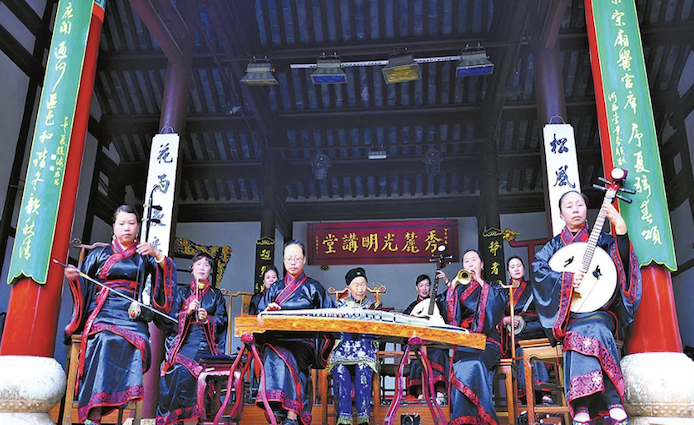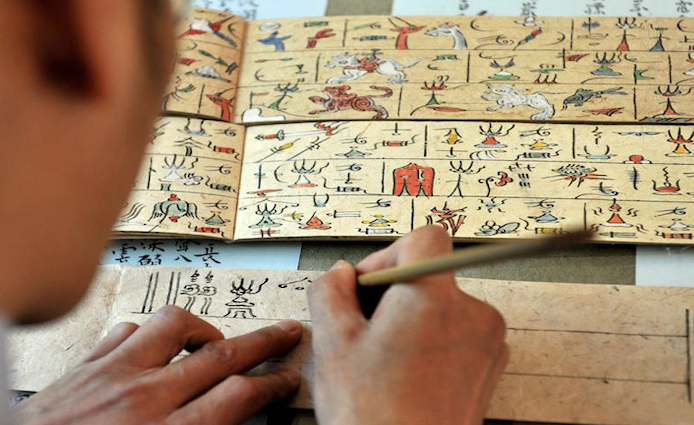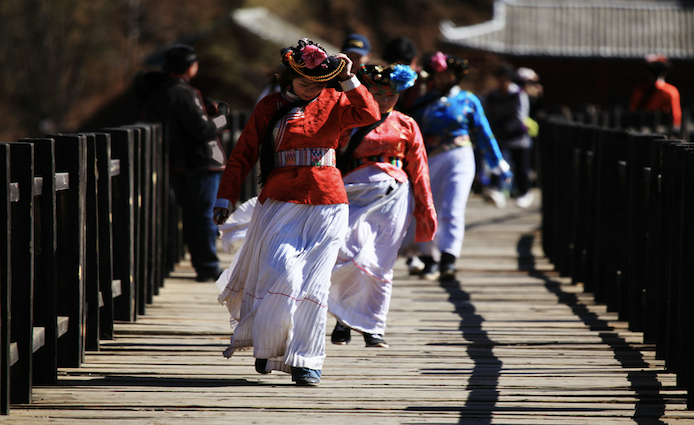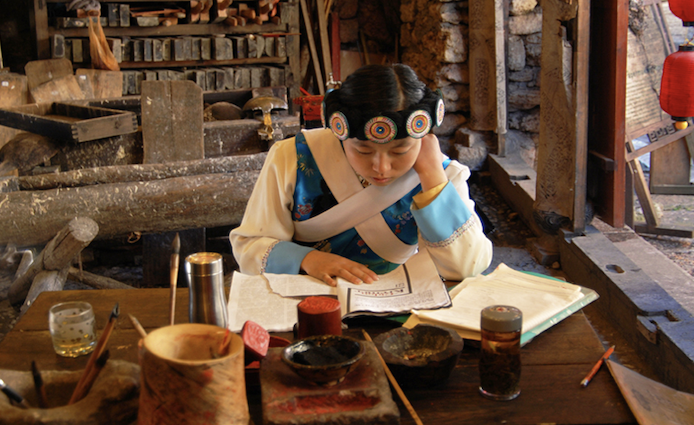
Dongba Culture in Lijiang
About 600 kilometers northwest of Kunming in Yunnan province, Lijiang is on the UNESCO World Heritage list. There the Naxi people created the Dongba culture, the soul of Lijiang. "Na" means "black" or "large," while "Xi" means "people."
Since the 14th century, the Naxi have created their own music, passing it down from generation to generation. After more than 500 years of trial and hardship, they also preserved part of the Han classical music already lost in the inland China. The two forms are now considered living fossils.

Lijiang is also famous for its 55 ancient frescoes painted more than 600 years ago. They're housed in 15 temples and cover a total area of nearly 14,000 square meters. The largest fresco is in Dabaoji Palace. With 100 different figures, the frescoes reflect different painting styles of different religions and ethnic groups.
The soul of Lijiang, Dongba culture originated from the Dongba religion about 1,000 years ago. In the Naxi dialect, Dongba is "a wise man" who also carries on the traditional songs and dances. The 1,300 Dongba characters are the only living primitive pictographs in the world. The Dongba scriptures, the encyclopedia of ancient Naxi society, cover religion, philosophy, history, literature, art, astronomy, geography, and medical science.

The Mosuo people live at Lugu Lake, about 300 kilometers northeast of Lijiang. They still retain the vestiges of a matriarchal society. Lovers have no economic or legal relationship and continue to live in their mother's homes even when they have children. Lijiang is not only a great treasure of China but also of the world.

The Dongba culture is a most inclusive term referring mainly to the language and scriptures. The Dongba language is actually composed of 1,400 picture-like characters and symbols that are still used by Dongbas, researchers, and artists of the culture. It is by now the only living hieroglyph in the world and is regarded as a precious cultural relic of mankind. On August 30, 2003, the Dongba classical literature was accepted as a written world heritage by UNESCO.

Many other countries have built their own collections of Dongba scriptures, for instance, the US, the UK, France, Japan, Germany, Italy, and Austria. In the US alone, the collection in the Library of Congress plus that in Harvard University Library numbers over 4000 volumes. In China, Dongba scriptures have been collected by the Library of Yulong County, and the Library of Yunnan Province.

For better protection, research, and development of the Dongba Culture, in 1984 the Naxi Dongba Cultural Museum was under the Black Dragon Pool of Lijiang. The museum has more than 10,000 Dongba cultural relics and various other historical relics and offers the "Dongba Culture Exhibition", thereby attracting more than 100,000 visitors each year. Meanwhile, it also compiles and publishes a Newsletter on Dongba Culture and has established the Lijiang Naxi Dongba Cultural School. For its outstanding work over the past years, county museums in China awarded the honor of "Advanced Cultural Unit in China", and listed as one of the bases for patriotism education in the province.
Photo Resource: Internet
If there's any copyright issue involved, please contact us to delete.



